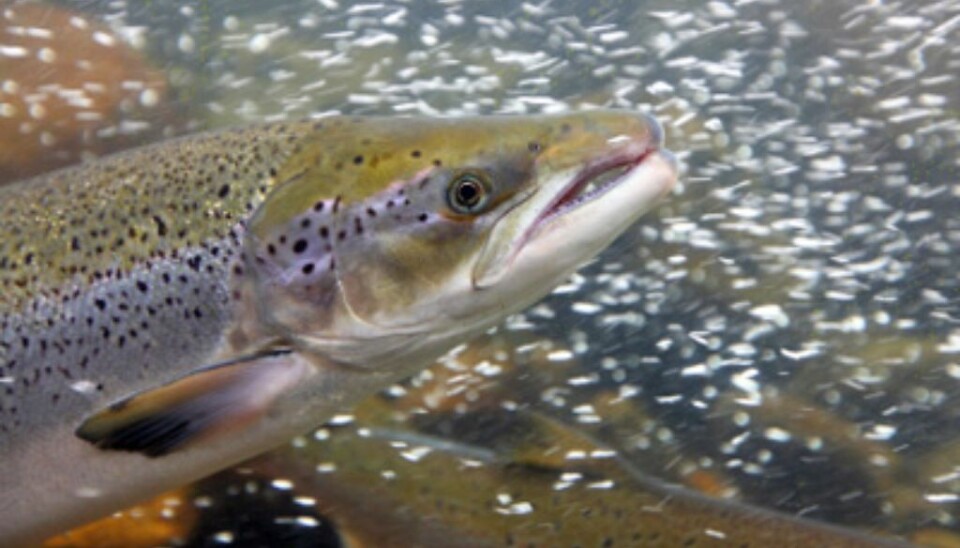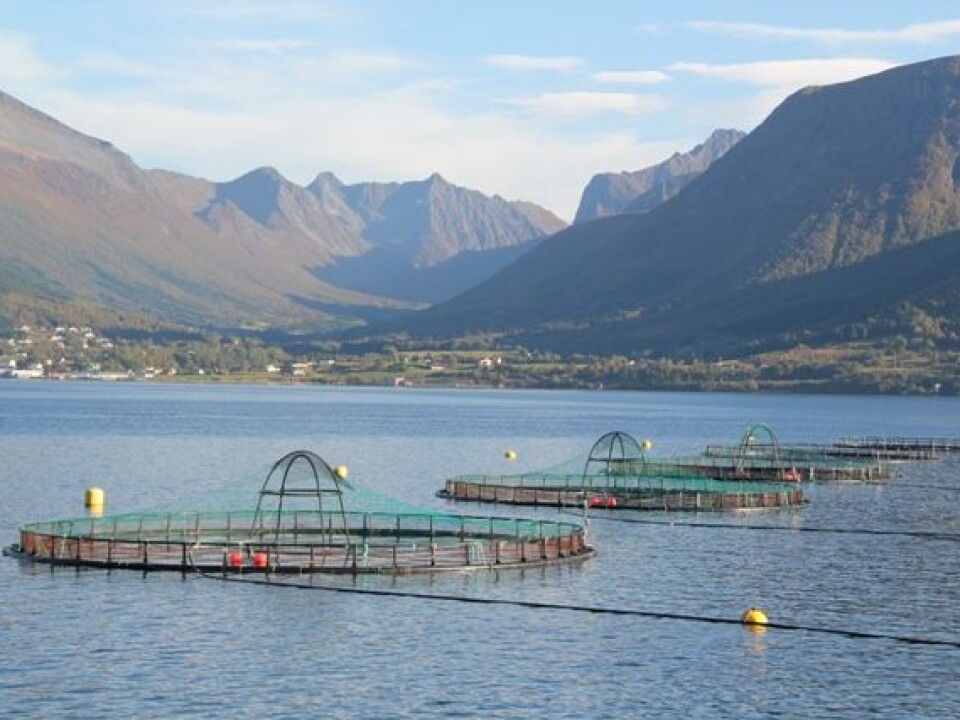
Farmed salmon are as fertile as wild salmon
The sperm from farmed male salmon are just as likely as the sperm of wild salmon to succeed in fertilising wild salmon eggs, experiments have shown. Researchers recommend that farmed salmon be made sterile.
Denne artikkelen er over ti år gammel og kan inneholde utdatert informasjon.
If male salmon that escape from pens along the coast had more savvy about sexual reproduction in the wild, the genetic diversity of wild salmon would be even further jeopardised than it already is.
Escapees from aquaculture facilities compete for food supplies and for partners – they crossbreed with wild fish. However, wild salmon have an advantage in reproductive behaviour, knowing better how to court and time their releases of sperm and eggs.
Despite this advantage, wild Atlantic stocks face an onslaught of contenders, as hundreds of thousands of farmed salmon escape from pens and make their way to Norwegian spawning rivers and watercourses.
How serious the consequences are for wild salmon is a point of contention.

But most researchers are concerned that interbreeding and the infusion of non-indigenous genes has negative effects.
The fear is that with the passage of time, stocks of wild salmon in rivers and watercourses will be reduced because locally adapted gene pools make for better survival rates.
Problems on the macro level
Farmed salmon’s fluctuating success of hybridisation with wild salmon does not hinge on any weaknesses in the fish's sperm. The disadvantage is at a larger level – the fish's behaviour in relation to spawning in individual rivers.
This has been shown by a biologist and salmon researcher in Trondheim, Sigurd Einum at the Centre for Biodiversity Dynamics at the Norwegian University of Science and Technology (NTNU).
He joined forces with colleagues from abroad in a new study published in Evolutionary Applications.
“Sperm from farmed salmon does not necessarily lose the race when competing with sperm from wild salmon,” Einum said.
“Nor is there anything indicating that continued aquaculture will change the quality of sperm or eggs, making these groups of salmon incapable of interbreeding,” he adds.
He thinks the new study will show that there is a strong potential for continued genetic interbreeding between wild and farmed salmon stocks.
Early escapes – fewer differences
“Earlier studies have demonstrated that male farmed fish display inferior courting behaviour out in nature, or that their timing is poor,” says Einum.
The male salmon need to release their sperm just as the female deposits her eggs in a shallow nest of river gravel she digs.
But younger aquaculture escapees are less likely to make such mistakes than older ones.
Einum and his colleagues show in their study that salmon that escape early in life can behave more like wild salmon than those that make their way into the wild after approaching maturation.
“In these cases there would be little to prevent these fish from reproducing in rivers and breeding with wild salmon,” he says.
Sterilisation
As researchers determine that farmed salmon are fully capable of interbreeding with wild populations, they think the best answer would be to sterilise them by means of what is called triploidisation.
Triploidisation involves pressurising salmon eggs to make them retain an extra amount of the mother fish’s DNA. The result is usually infertile offspring.
“It is not a problem to sterilise farmed salmon from a technical standpoint. But the aquaculture industry has not been too enthusiastic about doing it. Sterilisation can result in deformities, so other solutions are being explored,” says Einum.
Tests have also shown that sterile fish are less able to withstand higher water temperatures, but they grow well.
While sterilisation attempts to date have not eliminated complications, Einum thinks striving for sterility makes sense.
“Farmed fish will probably continue to escape in large numbers. Sterilisation is perhaps the safest and easiest way to avoid hybridisation,” he says.
“That said, there are other challenges which are not solved by sterilisation, particularly the spread of salmon lice and other diseases. These concerns call for other countermeasures,” says Einum.
The Research Council of Norway has appropriated NOK 40 million to a research group, partly consisting of scientists from the Norwegian Institute of Marine Research, to find out whether a vaccine for farmed fish could be devised that would keep potential escapees from spawning with wild salmon.
Lots of hybridisation
Rivers with sparse populations of wild salmon are thought to be particularly vulnerable to invaders from the aquaculture industry, resulting in genetic changes as the farmed fish mate.
However, it has been known for some time that escaped farmed fish find it harder than their wild relatives to successfully swim up rivers and spawn.
This is fortunate. But the escaped salmon’s success rates vary geographically. In some areas wild and farmed fish interbreed rather readily.
Most cross-breeding has been witnessed recently in the Norwegian rivers Loneelva, Vosso and Opo, where the Institute of Marine Research reports introgression with wild gene pools was from 31 to 47 percent.
Most problematic
The biggest risks of aquaculture continue to be this genetic exchange and the risk of salmon lice contamination, according to a risk assessment from the Institute.
“Anglers and conservationists are worried they could disrupt locally-adapted traits like timing of return, adult body size and disease resistance,” said Professor Matt Gage of the UK’s University of East Anglia in a press release. He is the lead author of the new study.
Einum thinks interbreeding will undoubtedly reduce the genetic diversity of wild salmon stocks.
“Everything we know today tells us that this will greatly reduce the capacity of wild stocks to adapt to their local environments. As a result this will lower the numbers of salmon and perhaps undermine their survivability on the long run,” he says.
---------------------------------
Read the Norwegian version of this article at forskning.no
Translated by: Glenn Ostling






























